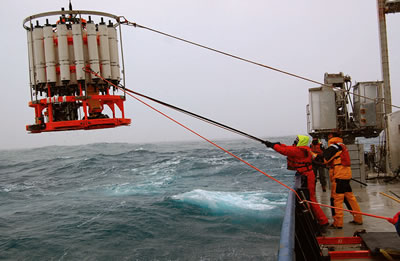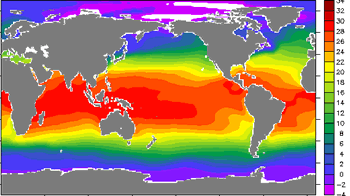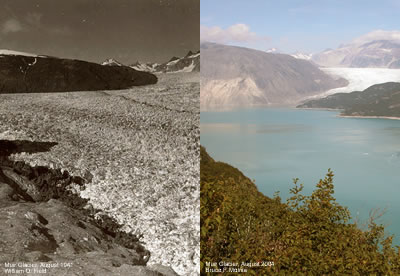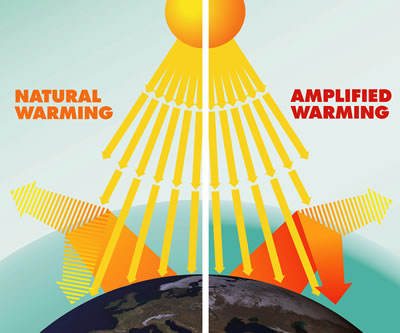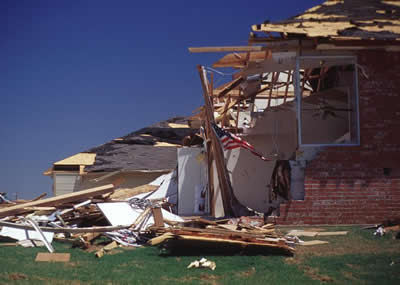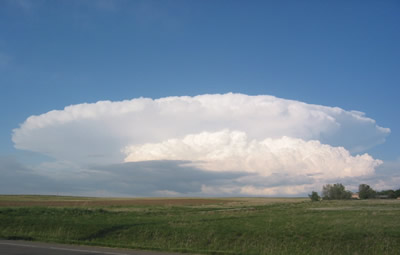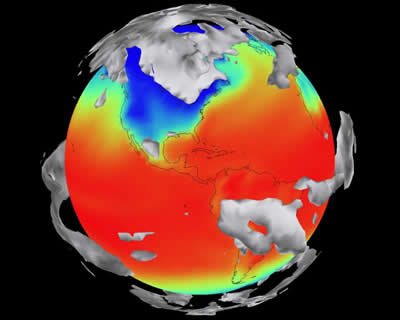Click on image for full size
Source: B. Longworth © 2008
Climate Literacy - Essential Principle 5
Our understanding of the climate system is improved through observations, theoretical studies, and modeling.
Fundamental Concept 5a.
The components and processes of Earth’s climate system are subject to the same physical laws as the rest of the Universe. Therefore, the behavior of the climate system can be understood and predicted through careful, systematic study.
Fundamental Concept 5b.
Environmental observations are the foundation for understanding the climate system. From the bottom of the ocean to the surface of the Sun, instruments on weather stations, buoys, satellites, and other platforms collect climate data. To learn about past climates, scientists use natural records, such as tree rings, ice cores, and sedimentary layers. Historical observations, such as native knowledge and personal journals, also document past climate change.
Fundamental Concept 5c.
Observations, experiments, and theory are used to construct and refine computer models that represent the climate system and make predictions about its future behavior. Results from these models lead to better understanding of the linkages between the atmosphere-ocean system and climate conditions and inspire more observations and experiments. Over time, this iterative process will result in more reliable projections of future climate conditions.
Fundamental Concept 5d.
Our understanding of climate differs in important ways from our understanding of weather. Climate scientists’ ability to predict climate patterns months, years, or decades into the future is constrained by different limitations than those faced by meteorologists in forecasting weather days to weeks into the future.1
Fundamental Concept 5e.
Scientists have conducted extensive research on the fundamental characteristics of the climate system and their understanding will continue to improve. Current climate change projections are reliable enough to help humans evaluate potential decisions and actions in response to climate change.
1. Based on “Climate Change: An Information Statement of the American Meteorological Society,” 2007


